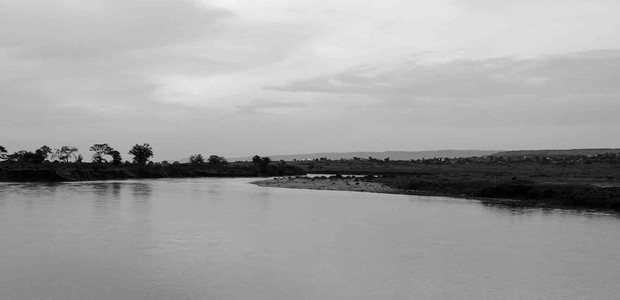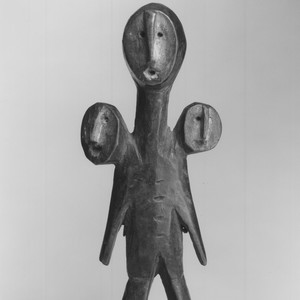Relief as Kenya denies plans to construct Norera Dam

A water resources authority in Kenya has eased tensions brewing between Kenya and Tanzania over the exploitation of Mara River waters by saying that the country has no plans to construct a dam in the Mara River Basin.
The Mara River rises in the Mau forests of Kenya, and flows through world-famous savannah rangelands; in Tanzania, it forms a floodplain wetland – the Mara wetland – before discharging into Lake Victoria in Tanzania. Around 65 percent of the river basin is located in Kenya and 35 per cent in Tanzania.
Chrispinus Wafula, Regional Manager for the Mara and Sondu sub-region at the Kenya Water Resources Authority (WRA), says there is no plan for the construction of the dams by the Kenya government in the next 20 years, despite proposals by the Nile Basin Initiative (NBI), Nile Equatorial Lakes Subsidiary Action Program (NELSAP). “The position right now is that the Kenyan government is not planning to construct Norera Dam within the Mara River Basin,” says Wafula. Initial reports indicated that under the framework of NELSAP, the WRA had developed a water allocation plan for the Kenyan side of the basin.
WRA is a state corporation under the Ministry of Water and Irrigation in Kenya mandated to safeguard clean water by ensuring that there is proper regulation of the management and use of water resources to ensure sufficient water for everyone – now and in the future.
The statement from WRA officials sparked a sigh of relief, particularly for the people in the Republic of Tanzania living downstream of the Mara River.
The plans to construct the Norera Dam in Kenya and the Borenga Dam in Tanzania, all within the Mara River Basin, stirred controversy amid warnings that the Serengeti-Mara ecosystem could face severe threats from increased human activity.
In 2019, the Nation newspaper reported Tanzania wanted the construction of two dams, Norera in Kenya and Borenga in Tanzania, halted to protect the Serengeti-Mara ecosystem, which is the heartbeat of the multibillion-dollar tourism sector in the region.
The dams will lead
to an adverse impact
on the Serengeti
ecosystem.
“The dams will lead to an adverse impact on the Serengeti ecosystem, including the loss of some species due to lack of water in the Mara River during the dry season,” the paper quoted Constantine Kanyasu, Tanzania’s Deputy Prime Minister and Minister for Natural Resources and Tourism as telling Parliament.
In May 2019, reports indicated that Kenya had vowed to proceed with the dam’s construction. In response, Tanzania sought the intervention of the East African Community (EAC) ministerial committees on the issue of damming the Mara River, which has put it on a collision course with Kenya. WRA officials then said they would not go ahead with their plans. “As WRA, we have not yet received a proposal from NELSAP, which would be the first step towards constructing the dams. But even with the proposal, it cannot be guaranteed that the project will get a green light,” says Wafula.
He says from the plans that NELSAP has since published, the biodiversity in the Mara River Basin would face an imminent threat never imagined before. “This is where ecological diplomacy comes in. While the project could have immense benefits, we already have our neighbour (Tanzania) that has raised concerns about the implementation of the project and even went ahead to stop it. The best Kenya could do, and which she has done, is to give conservation and sustainable operations priority,” says Wafula.
The World Wide Fund for Nature (WWF), an independent conservation organization working to sustain the natural world for the benefit of people and wildlife, is among the voices that rejected the proposed construction of the dams from the word go.
According to WWF, the Mara River Basin is home to at least 473 freshwater species, including four mammals, 88 waterbirds, 126 freshwater-associated birds, four reptiles, 20 amphibians, 40 fishes, 50 invertebrate species and 141 vascular plants.
Give conservation
and sustainable
operations priority.
Its Mara River risk assessment report states that ten of the freshwater species in the Mara River Basin are threatened with extinction due to a combination of threats, including habitat loss, water pollution, over-abstraction and drought, and the presence of invasive non-native species and over-exploitation. The construction of the dams would worsen an already bad situation.
The plans for Kenya are quite elaborate and thus more harmful to the ecosystem. This includes plans for constructing the 10-metres high Norera Dam on the Mara River, mainly for irrigation, 30 kilometres upstream of the Serengeti, and the 65 metres Amala High Dam in the Mau forest, with provision for water transfer through a tunnel from the Amala River to the Ewaso Ngiro River for hydroelectricity generation by three dams (Oletukat Olenkuluo, Leshoto and Oldorko; which are 140, 57 and 30 metres high, respectively) and discharge of that water to Lake Natron in Tanzania. The feasibility studies for these dams were all completed in 2016, except for Amala High Dam.
The Amara and Norera scheme
According to NELSAP, the Amara and Norera Water Resources Development Scheme would support 5,000 hectares of irrigated agricultural land and other productive uses such as livestock and aquaculture. Also, the scheme would support the development of a comprehensive potable water network covering rural areas, market centres and towns such as Longisa and Narok.
The scheme would also improve the downstream low-flow conditions in Kenya’s and Tanzania’s national parks. According to NELSAP, water extraction from the baseflow taking place downstream of the Amala Bridge gauging station would cease. NELSAP’s feasibility studies suggest the scheme is viable. “A first stage development of Norera Dam alone, prior to the construction of the Amala Dam, has been shown feasible with the prerequisite that no transfer from Amala to Ewaso Ngiro South takes place,” NELSAP communicated by email.
However, the “Amala transfer to Ewaso Ngiro South should not be implemented without the construction of Amala Dam, which will provide the benefit of regulating storage”, according to NELSAP. If it would, it could have “a serious adverse impact on the potential for water resources development in the Amala valley and on the flow regime, primarily on the Amala River, and, secondarily, on the Mara River itself”.
The so far available feasibility studies recommend that it is vital to carry out a comprehensive feasibility study for all components of the entire scheme before any further steps are taken. The study should include the potable water supply and water for productive sectors, building on the already existing studies and plans for the Norera Dam. This should be accompanied by a complete EISA study, a Resettlement Action Plan and an Environmental and Social Management Plan incorporating the entire scheme.
A direct threat to the Serengeti
Scholar Dr. Eric Wolanski, a coastal oceanographer and eco-hydrologist at the James Cook University in Australia, teamed up with Mtango Mtahiko and Bakari Mnaya, both of Tanzania National Parks, to look at the impact of the Kenyan dams on the Serengeti. In their estimation, the Serengeti will die if Kenya dams the Mara River.
“The Kenya dams pose a direct threat to the Serengeti. The Norera Dam would release a minimum environmental flow (MEF) of 100 litres per second, only one-third of the Mara River MEF recommended by the Lake Victoria Basin Commission of the East African Community. That same water would then flow through 30 kilometres of intensive irrigation farming, and thus the Mara River would be dry on entering the Serengeti,” reads their joint report.
The Kenya dams
pose a direct
threat to the
Serengeti.
The Norera Dam would receive 39 percent of its water from the Nyangores River; the two irrigation dams on the Nyangores (Mungango and Silibwet) would decrease the low flow by 100 litres per second. But this impact was not included in the Norera dam proposal and doubles the chances that this dam will not release the MEF.
“The Norera proposal is based on a mean annual flow calculated over 22 years of data, but in a dry year, the annual flow is only 51 percent of the mean flow, and thus in such a year, the operator has only half of the water expected. Being short of water, the Kenyan operator has either to release the MEF for the Serengeti and kill the irrigation fields and hurt the local community, or retain the water for irrigation and kill the Serengeti,” the joint report further reads.
This, therefore, clearly becomes a local political decision. As such, Tanzania will have no say. The authors also take issues with the proposal that they claim has breached the World Bank Safeguard Policies. The proposal states incorrectly that the Mara River is not an international waterway and that the development does not affect the forests.
“The total annual storage and use would be 115-185 percent of the annual flow in a drought year, and hence the dams require more water for irrigation than is available, leaving nothing for MEFs. The Amala High Dam would destroy the Mau forest, and this would further decrease the Mara River dry season flows. During the dry season in a drought year, there would be zero MEF for the Masarua swamp,” they observe.
The damming of Mara River upstream and the proposal to divert Mara River water to Lake Natron raises questions about the future of flamingoes since about 75 percent lesser flamingoes are born around Lake Natron. The other issue is that if the wildebeests cannot use the Mara River, which is their only water resource in the dry season in a drought year, multiple studies suggest they will die.
The Mara Valley and Borenga project
The Mara Valley Multipurpose Water Resource Development Project is located in the Mara Region, downstream of the Mara River. A feasibility study, detailed architectural designs by the NBI and the preparation of tender documents were completed in December 2017. NELSAP submitted the documents to the Government of Tanzania to adapt these into national plans.
Tanzania would need an upward of USD 217 million to implement the 10-year-project and construct the Borenga Dam in the Serengeti District, within the Mara River Basin in Tanzania. The project would benefit residents in the Serengeti, Butiama and Tarime districts, areas with great agricultural potential that could be harnessed through irrigation.
In the three districts, 17 villages would have access to domestic and livestock water supply. Besides, 8,340 hectares of agricultural land could be irrigated, 2.85 megawatts of hydroelectric power could be generated, and the project would allow for improved drought and flood control in the communities living in the lower Mara (Masurura/Mara wetlands).
The NBI Coordinator for Tanzania, Ahmad Ngoda says the funds involved are huge, highlighting the need to have consensus. The residents in the project area, a region prone to floods from the Mara River, welcome any attempt to mitigate this ever-increasing risk for the communities living downstream of the Mara River.
Meaningful progress?
Samwel Kitome, a resident in Nyiboko village, says the project that the Tanzanian authorities have halted was a promise that the local farmers would depart from rain-fed agriculture, which has disappointed farmers, leading to losses whenever rains start earlier or later than expected or when there is inadequate rainfall. “We were ready to give out parcels of our land for this project after we were told about its benefits. Everyone knows that rain-fed agriculture is becoming a more dangerous gamble by the day,” he says.
Joseph Joshua, a resident of Borenga, says: “I don’t understand why we can’t make meaningful progress as a country regarding this project. We, the residents of Borenga and Marasochome, had made a lot of progress to the point that the educated men and women in our communities were taken for a seminar in Kenya where they were inducted on the immense benefits of this project.”
The locals
were ready for
this project.
Bhoke Chacha Makaiga, a 40-year-old resident of Nyiboko, says that in 2017 he was among those who were actively involved in distributing questionnaires where locals would give their opinions on the proposed project.
“We have a rich valley here, and the locals were ready for this project that would enable them to have all year production of crops. We incur heavy losses when floodwaters from the Mara River destroy our crops whenever the river breaks its banks. The dam was a great promise,” he says.
In Kenya, however, it is a whole different story. Locals do not know the exact location for constructing the proposed Norera Dam. It is a story very few can talk about. “If you ask an average resident of Narok County where the Norera Dam was supposed to be constructed, chances are they will not know exactly where the location is,” said an official in the County Government of Narok in Kenya who chose to remain anonymous because he is not authorised to speak to the press.
In 2015, NBI prepared the Mau Forest management plan detailing the project’s preparation to conserve Maasai Mau and Trans Mara forest blocks. The main components identified: First was Land and Water Management which would cost USD 11.4 million. This would comprise interventions with an emphasis on improved land. The second was livelihoods diversification, poised to cost USD 39.7 million. This would focus on interventions with the potential to improve incomes and thus livelihoods. Institutional Strengthening, forecasted at USD 3.1 million, would focus on interventions for building the capacity of the implementing partners, government and community associations.
NBI/NELSAP contracted G. Karavokyris & Partners Consulting Engineers to analyse the transboundary Mara catchment, including hydrological analysis and sediment modelling to estimate inflows, soil erosion, and reservoir and sediment yield at the proposed dam sites, among other responsibilities. While their report initially gave the project life, the Mara River Basin ecosystem has become more fragile, caused by increased human activities over the years and climate change.
Transboundary solutions to safeguard the Mara Basin
“Preliminary Environmental and Social Impact Assessments (ESIA), compliant with international standards and environmental and social requirements of National Environmental Management Authority (NEMA), Kenya, and the National Environmental Management Council (NEMC), Tanzania, as well as with the World Bank’s safeguard/policies may all have given the project the go-ahead, but we must appreciate that the Mara River as we know it now is not exactly the same as three or four decades ago. With time it may just be impossible to reverse the damage caused by the construction of a dam upstream,” says Philemon Okello, a local environmentalist based in Kisumu.
With time
it may just
be impossible
to reverse
the damage.
The Mara River is a vital lifeline for wildlife and people’s lives and livelihoods in both Kenya and Tanzania. Transboundary by nature, the river also represents a source of conflict between the two nations. People living along the Mara River and its basin area are increasingly facing water shortages, poor water quality and environmental degradation as a result of pollution, agricultural runoff, large-scale irrigation projects, and mining and other industrial activities. And what happens to the Mara River in Kenya impacts those reliant on it downstream in Tanzania.
The NBI through the NELSAP and the Lake Victoria Basin Commission (LVBC) under the EAC recognise the importance of Integrated River Basin Management (IRBM) initiatives for the conservation, sustainable and equitable use of shared freshwater resources. In recent years, the NBI with the support of the German Gesellschaft fuer Internationale Zusammenarbeit (GIZ) therefore worked with scientists to gather crucial data about who uses how much water, how, where and when.
NBI and GIZ hope that the social and scientific data on water use along the Mara River form the basis of a future transboundary water allocation plan and water treaty to ensure people and wildlife on both sides of the border can continue to rely on the Mara River’s life-giving waters.
| Fact Box: Tourism in Tanzania A 2015 World Bank report on tourism in Tanzania shows that the country is endowed with a rich storehouse of nature-based tourist attractions. Tourism is focused primarily on renowned attractions in the “Northern Circuit” – the great plains of the Serengeti, the wildlife spectacle of the Ngorongoro Crater, and Mount Kilimanjaro, the highest mountain in Africa, as well as the island of Zanzibar with its lush tropical beaches. “The tourism industry has emerged as a robust source of growth and an economic stabiliser in times of crisis. In just over a decade, annual tourist numbers have soared from about 500,000 in 2000 to over 1 million visitors in 2012. The sector generates the bulk of export revenues for the country, typically surpassing minerals and gold, is a reliable source of revenue to the government, and provides well-remunerated direct employment to over 400,000 people,” reads the report. Official statistics from Tanzania’s updated gross domestic product (GDP) suggested that in 2013 tourism accounted for about 9.9 percent of GDP (equivalent to an amount of USD 4 billion in direct and indirect contributions). But anything complicating the Serengeti ecosystem would put the brakes on Tanzania’s tourism sector and, in turn, put the brakes on its economy, the report said. “A decline in tourism revenue would impact the exchange rate and consequences that reverberate throughout the economy,” it said. “Apart from these obvious economic benefits, tourism can stimulate broader benefits to the economy – upgrades to infrastructure, conservation of natural habitats, and gender equity.” |


